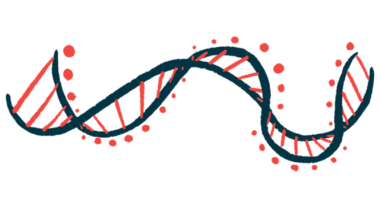Scientists ID Hundreds of Proteins That Interact with CFTR Protein

An international team led by scientists at the University of Toronto identified hundreds of proteins, from among nearly 10,000 screened, that interact with the CFTR protein in mammalian cells.
These interacting proteins may be useful therapeutic targets for cystic fibrosis (CF), which is caused by mutations in the gene coding for the CFTR protein.
“We identified more than 400 proteins associated with either healthy or mutant CFTR, and have shown that some of them could predict the variability seen in patient symptoms and treatment responses,” Igor Stagljar, PhD, the study’s lead investigator and a professor with the Donnelly Centre for Cellular and Biomolecular Research at U of T’s Temerty Faculty of Medicine, said in a press release.
“With a more comprehensive view of the CFTR protein interaction network, we can identify novel drug targets that should enable more patient-specific therapies,” Stagljar said.
The study, “CFTR interactome mapping using the mammalian membrane two-hybrid high-throughput screening system,” was published in the journal Molecular Systems Biology.
The CFTR protein normally sits at the surface of cells and acts like a gated channel, regulating the flow of water and salt ions in and out of the cell. In CF, mutations lead to a lack of functional CFTR. The most common CF-causing mutation is F508del, present in roughly 90% of patients.
When the CFTR protein is made within a cell, it undergoes a number of modifications to tweak the protein into the correct shape for its function and transport to the cell’s surface. The mature protein at the cell’s surface interacts with a number of other proteins, but details about which other proteins CFTR interacts with inside of cells remain unclear.
In their study, the researchers used a novel platform called MaMTH-HTS to evaluate interactions between CFTR and other proteins.
The platform involves genetically engineering cells to have two proteins that express a fluorescent “tag.” The CFTR protein is tagged with one color and another random protein is tagged with another color. When the two proteins interact, the two colors blend to form a third color, in the way red and blue can be mixed to make purple.
Using an established technology called Fluorescence-Activated Cell Sorting (FACS), the researchers are able to examine the florescence in individual cells to look for protein-protein interactions based on the one that was “tagged” in a given cell.
“While still new and awaiting substantial benchmarking, in its current format our MaMTH-HTS platform presents a relatively fast and simple means of screening large numbers of interactions involving full-length membrane proteins directly in the environment of living mammalian cells,” the researchers wrote.
The team tested for interactions between CFTR and nearly 10,000 other proteins, and identified 447 that interacted with wild-type (healthy) CFTR and/or with F508del-mutated CFTR. Specifically, 224 proteins interacted with the wild-type CFTR, while 269 interacted with the mutant CFTR. Just over 10% of the interacting proteins were shared between wild-type and F508del-mutated CFTR.
One interacting protein of particular interest is called fibrinogen-like 2 protein (FGL2), which the researchers showed interacts with both mutant and wild-type CFTR using their assay and a standard technique called co-immunoprecipitation. This protein, also known as fibroleukin, plays a role in coordinating inflammation and scarring.
“We think Fibrinogen-like 2 protein is a valuable drug target for cystic fibrosis, and we’re now working with our collaborators to validate other proteins that turned up in this study and in genome-wide association studies,” Stagljar said.
In experiments in intestinal epithelial organoids — gut cells grown in a laboratory setting and meant to mimic the architecture of cells in human tissue — reducing FGL2 levels led to a decrease of CFTR activity. In CF patient organoids, however, the effects were more complex as FGL2 reduction did not significantly affect activity in the presence of Trikafta, a triple combination CF therapy.
“Altogether, these results suggest a role of the physical interaction of FGL2 with CFTR in its biogenesis [production] and function,” the researchers concluded.
The scientists said more research was needed on how FGL2 interacts with wild-type and mutant CFTR, which they noted could open new avenues for treatments. Because MaMTH-HTS is a relatively new technology, however, more research is needed to validate the findings.
“Hopefully, the data provided here will prove to be useful for further studies into CF pathophysiology [disease biology] and for the development of innovative biomarkers and better treatment options,” the researchers wrote.








